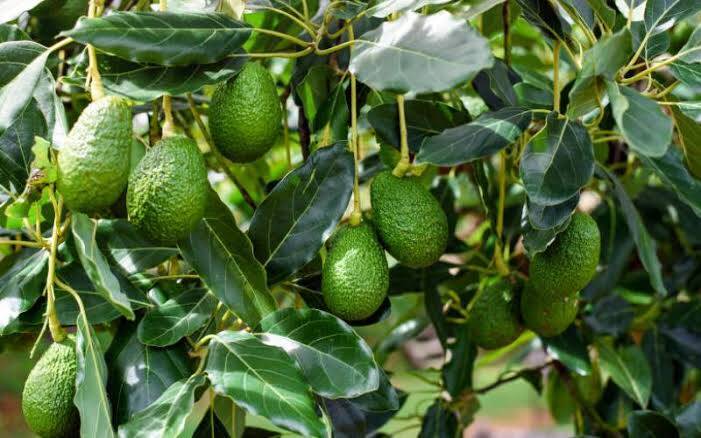Last updated on March 2nd, 2024 at 06:02 pm
You are thinking of starting an avocado orchard in Kenya. Good decision. Avocados have a great future in the Kenyan market. The following guide will provide you with all the information you need to get started.
Benefits of Farming Avocado in Kenya
Kenya is among the top African countries where avocado is grown. The crop has gained popularity in the recent past due to its high nutritional value and multiple benefits to human health. Avocados are not only a good source of healthy fats but also contain nearly 20 vitamins and minerals including potassium, vitamin E, B-vitamins, and magnesium.
Avocados are a versatile fruit that can be enjoyed in many different ways. They can be eaten as is, used in smoothies, or added to salads. Restaurants are also beginning to use avocado in dishes such as sushi, tacos, and burritos.
As the demand for avocados continues to grow, so does the demand for avocado farmers. If you are interested in becoming an avocado farmer, this guide will provide you with all the information you need to get started.
Read Also
Market Size and Price of Avocado
The demand for avocado is high, and this is because the fruit is very nutritious. It is a good source of mono unsaturated fatty acids, dietary fiber, vitamin E, B-vitamins, and potassium. The price of avocado is also high, and this is because the fruit is in high demand. The market demand for avocado is expected to grow in the future, and this is because the fruit is very nutritious.
How to Grow, Care, and Harvest Avocado
Now that you know all about avocado farming in Kenya, it’s time to learn how to grow, care for, and harvest your avocado trees.
The first thing you’ll need to do is plant your avocado trees in a location that has plenty of sun exposure and well-drained soil. Avocados prefer climates with temperatures between 20 and 25 degrees Celsius, so make sure to choose a location that is suitable for your region.
Once your trees are planted, it’s important to water them regularly and fertilize them twice a year with a balanced fertilizer. You can also prune your avocado trees to keep them healthy and encourage new growth.
The best time to harvest avocados is when they reach maturity, which is usually when they turn from green to black.
Make sure to use a sharp knife to cut the fruit from the tree, being careful not to damage the stem. Avoid bruising the fruit by handling it as little as possible.
Read Also
Varieties of Avocado to Grow
When it comes to choosing the right variety of Avocado to grow in Kenya, there are three main varieties that you should consider. The most popular variety is the Fuerte, which is an excellent choice both for its high yield potential and its delicious flavor.
Additionally, you should also consider the Hass and Pinkerton varieties, which are known for their distinctive flavor and high market demand.
No matter which variety you choose to grow, it’s important to find out as much information as possible before planting.
Make sure that the area where you plan to plant has suitable climate conditions and soil; different varieties may require different levels of temperature and nutrient levels.
Additionally, understand the market demand size of each variety—you want to know what buyers are looking for before investing in a particular variety.
Suitable Location and Climate Conditions for Avocado Farming
When it comes to growing avocados, you’ll need to make sure the location is suitable for avocado farming. Avocados are tropical plants, so they require a warm climate with temperatures ranging from 10-25 degrees Celsius all year round. You should also choose a location that has good soil drainage and is far away from frost.
Avocado farming in Kenya can be divided into two parts: highland and lowland. Lowland areas are generally warmer, while highland areas are colder and more humid. The ideal temperature conditions for highland farming is between 20-25 degrees Celsius, while lowlands should remain between 15-20 degrees Celsius all year round. Additionally, both highlands and lowlands require lots of sunlight and humidity to ensure the best Avocado growth. Lastly, you’ll need to ensure that your chosen location has enough water available to keep your crops hydrated during the dry season.
Read Also
Problems and Solutions of Avocado Farming
Every farming process has its own set of problems and that of Avocado farming is no different. The most common problem faced by Avocado farmers is the increased demand for the produce which sometimes surpasses the supply leading to price hikes.
In order to overcome this problem, you should ensure that you have a well-managed farm that can adequately keep up with the market demand.
This means investing in improved farming practices such as good crop rotation and irrigation systems.
Furthermore, you should also try to identify and control pests and diseases on your farm in order to maintain optimal yields.
Another issue faced by Avocado farmers is lack of access to affordable input options such as seedlings and soil fertility practices. To address this, you could look into integrating with local seed suppliers who can offer quality inputs at lower prices. Additionally, you could also benefit from agribusiness education programs which provide comprehensive information on culturing and management of Avocados.
In conclusion, if you are considering embarking on avocado farming in Kenya, then this guide is perfect for you. The guide provides all the necessary information required to start and succeed in avocado farming.
Read Also
